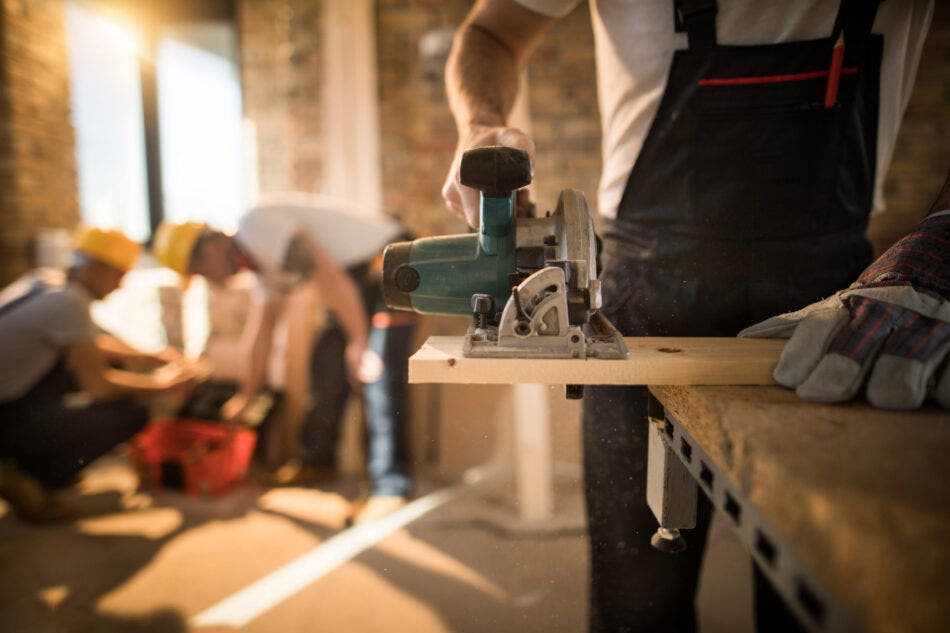The pandemic has wreaked havoc with many things in our lives, including global supply chains. Availability of raw materials has forced product shortages and in turn increased construction material costs—which underscores the importance of checking your policy limits. Learn why it’s critical to reassess the replacement costs of your home or commercial building.
By Wendy Wildeman, Acera Insurance
With limited product availability, increasing material costs and global supply chain issues, it is more important than ever for homeowners and business owners to re-evaluate the replacement costs of their buildings.
If you’ve been looking to upgrade a few things at home—such as installing a new furnace, hot water tank or air conditioner—you will no doubt understand the frustration that comes with the extended wait times for delivery on these items. Likewise, if your property was damaged by the large 2020 hailstorm in Calgary, you experienced the period after which siding and window products were nearly impossible to obtain.
Surging construction material costs have also contributed to the increased price tag for new builds and renovations. For example, lumber prices hit an all-time high in North America this past summer.
The impact of these delays, shortages and escalated prices extends to the replacement cost of your property—no matter if that is your home or a commercial building—and is putting everyone at risk of being underinsured in the event of a loss.
Also, you can check Acera’s home insurance guide for all home insurance questions.
How Rising Costs Affect Your Insurance Coverage
Building construction prices spiked between 2020 and 2021, and have been steadily increasing this year, according to Statistics Canada.
For example, residential construction costs jumped by more than 20 per cent in the third quarter of 2021 compared to the same time period in 2020. Comparatively, non-residential construction costs increased by more than eight per cent. This has been adding tens of thousands of dollars—if not significantly more—to building costs.
To better understand how this impacts your property coverage, let’s review the definition of replacement costs in most insurance contracts, which reads as follows:
Replacement includes repair, construction or replacement with new property of like kind and quality.
Sounds pretty straight forward, right?
Issues arises, however, when your policy limits are not sufficient to meet actual replacement costs—and not just the cost to construct the building. In the event of a major loss, there will be additional expenses for demolition and debris removal, potential site improvements and more. All these things must be taken into consideration when determining your replacement value and, therefore, policy limits—or you risk being underinsured in the event of a loss.
Add to this co-insurance requirements, which state that you must insure your property to at least 80 per cent or 90 per cent (as stated in your policy) of the full replacement value. If you fail to meet this requirement, you will be deemed a “co-insurer” and will not receive the full value of the claim cost. (Check out this blog post to learn more about co-insurance and how insurers calculate it.)
To summarize, outdated replacement costs for your properties could be putting you at risk of significant financial burden in the event of a loss. Not only may your limits be too low to cover actual, current day material, goods and services costs, but you may also fall short on your co-insurance requirements and, therefore, only receive a partial amount of the claim value.
The Importance of Insuring to Value
Analysts are projecting that supply chain struggles and inflation will continue well into 2022. So, it’s crucial that property owners act now—instead of waiting until renewal time—to ensure their policies reflect full replacement value.
The recommended first step in this process is to obtain a professional insurance appraisal. Unlike property assessment value or realty assessment value, an insurance appraisal calculates full reconstruction value, including the cost to:
- reconstruct the property;
- complete necessary site improvements; and,
- complete demolition and debris removal.
In some cases, insurers have a cost calculator that can assist homeowners with determining the proper amount; however, an independent appraisal is always the best approach for all property owners to avoid a shortfall in their claim payment due to a co-insurance penalty.
Your broker can connect you to a professional insurance appraiser, who’ll establish the most accurate replacement value for your properties. Your broker will then work with you to update your policy, based on your insurance appraisal, so your property is adequately covered for losses and co-insurance requirements.
The pandemic has wreaked havoc with many things in our lives, including the price to rebuild properties due to product shortages and increased construction material costs. This underscores the importance of insuring to value. Contact your broker today to discuss your policy limits and options to reassess the replacement costs of your home or commercial building.
With more than 40 years of industry experience, Wendy Wildeman specializes in real estate insurance, from development and construction to commercial and condominium management groups.

